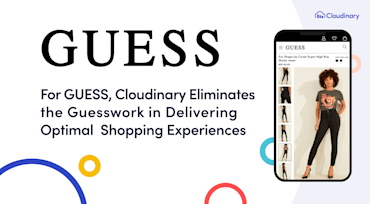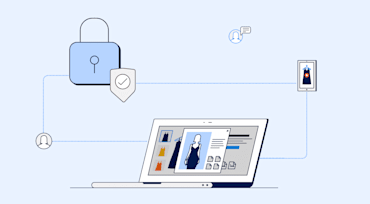In this age of most sites being static, a frequently asked question is how much dynamic functionality you can derive from Jamstack. The answer is a lot because you can incorporate reusable APIs in that architecture and leverage serverless, back-end-oriented functions with no back ends in place.

Progressive image decoding is an excellent way in which to accelerate page loads and hence improve the web-browsing experience. This post explains why and elaborates on the recent developments for that approach.

While COVID has affected most businesses, it has been particularly hard on those that sell products for the physical ‘brick and mortar’ world. One company that literally fits that bill is our Australian customer James Hardie, the largest global manufacturer of fibre cement products used in both domestic and commercial construction. These are materials that its buyers ideally want to see up close, in detail. When customers have questions, they expect personal service.

Part 1 of this post defines the capabilities of an enhanced Gravatar service, which I named Clavatar, and describes the following initial steps for building it:
This post, part 2 of the series, explains how to make Clavatar work like Gravatar and to develop Clavatar’s capabilities of enabling requests for various versions of the images related to user accounts.

The advent of web development since 25 years ago has given birth to an abundance of online services that help developers build apps efficiently and smoothly. Gravatar is a shining example of such a service. Built by WordPress, Gravatar generates globally recognized avatars. Fun fact: 80 percent of Gravatar users first came across that service when reading a WordPress blog.

GUESS? Inc. designs, markets, distributes, and licenses a lifestyle collection of contemporary apparel, denim, handbags, watches, eyewear, footwear, and other related consumer products. These products are distributed through branded GUESS Stores, as well as department and specialty stores around the world, and via e-commerce sites available to 55 countries. GUESS websites act as virtual storefronts that both sell their products and promote their brands, showcasing products in an easy-to-navigate experience that allows customers to see and purchase from its collections.

Did you know that five billion users of the top five social apps post 41.6 million messages a minute? Or that three billion JPEG images are created every day?
Not only does this tremendous volume of peer-to-peer activity profoundly affect our social lives, it has also revolutionized the way shoppers navigate the purchase journey. How? By reading unbranded feedback and the like from other users, shoppers can avoid marketing hype and make purchase decisions based on what they often consider to be objective, honest opinions on the merchandise.

Part 1 of this series highlights the basics of user-generated content (UGC) and its benefits for e-commerce. Part 2 describes how to leverage UGC images in e-commerce and efficiently upload, transform, and deliver them with Cloudinary. Part 3 focuses on videos in UGC and the many related management capabilities offered by Cloudinary.

In October, Netflix launched a wonderful miniseries based on Walter Tevis’s 1983 novel, The Queen’s Gambit, on the rise of a young prodigy to be the world's chess champion while tackling issues of emotional attachment and drug addiction stemming from childhood. That miniseries is a smash hit among chess fans. Since its release, Google’s search queries for “chess” have doubled, and those for “how to play chess” have hit a nine-year peak. Inquiries for “chess sets'' on eBay are up a whopping 250 percent1.

During this months-long COVID-19 pandemic, which of us have not made purchases online? In particular, early on during the lockdown, when only essential businesses were open, the web was the primary shopping outlet. Accordingly, we as consumers have come to learn how varied retailers and brands are in e-commerce savvy.
